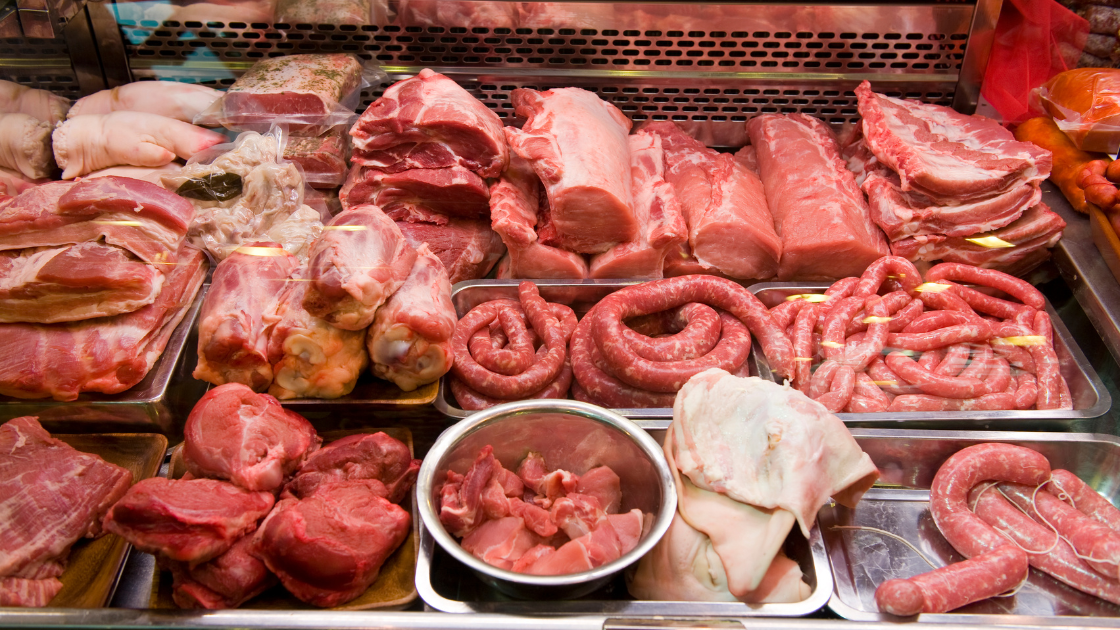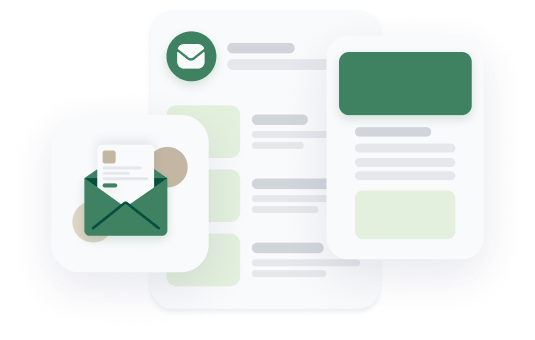How to Sell Flowers Online: 4 Easy Steps to Get Started
Flower farmers, let’s make market days a little bit easier.

With the growth of popular meat and protein box services, more and more consumers are looking online for local, high-quality meat to feed their families. This has opened the market for local ranchers and meat producers to start selling directly to their customer base. The days of grinding it out at the farmers’ market are becoming increasingly less important.
But with the rise in this trend, local producers are competing against large marketing dollars from nationwide corporations doing the same thing. So how do we compete? If you’re a local rancher or meat producer, here are our tips for selling your meat online profitably:
First, you want to define how you are going to sell your meat. There are many different options to choose from. Based on whether you currently have a customer base, the size of your operation, your marketing budget, and more, you may opt for one option over the other. Some ranchers also choose to offer multiple different options to their customers, i.e., they can buy a meat subscription and buy a la carte retail cuts.
Here are a few popular models to sell meat online:
The customer purchases a part of the animal (often cattle) and receives cuts based on the size of the share. Some farmers offer their customers the choice to select which cuts they receive. An example of a successful bulk-buying model is from Black Barn Farm who offer bulk beef and pork.
The meat box model has taken off in popularity! In this model, the customer purchases a monthly subscription for a size box (often small or large) for a pre-determined price. Either the customer has the ability to select what they get in their box, or the farmer chooses for them. This model is effective for ensuring recurring cash flow.
You sell a selection of retail cuts on your online store. Customers do not commit to a recurring subscription. Learn more about how Field Sparrow Farm sells retail cuts online.
Now that you’ve selected your model, you need to set up your e-commerce store to start accepting orders and making sales. Choosing the right e-commerce platform to sell meat online will prove very important, depending on your business model.
Important features to look for in your e-commerce platform when selling meat:
Unlike selling vegetables or nonperishable goods, meat comes in all different shapes and sizes. For example, not every chicken breast or every steak has the exact same weight. If you list a standard price per chicken breast, you are either overcharging the customer or underselling yourself. With sell-by-weight functionality, you can list an average price per product and alter the final weight after the order has been made. This ensures that the customer is paying exactly for what they ordered. To learn more about how to sell by weight online, check out our variable weight selling guide.
If you want to sell subscription meat boxes, ensure that your e-commerce platform has the ability to support subscriptions. With Local Line, you can define subscription terms per price list and per product. When a customer shops your storefront and purchases a subscription, every subscription period a draft order will be created on behalf of the customer. They can choose to skip, cancel, and edit their subscription at any time, as well as add one-off purchases.
With your e-commerce solution, you want the ability to select different fulfillment options, such as delivery and pick up, for your customers. With Local Line, you can create as many pick up and delivery options as needed to best support your customer base. You can also allocate different fulfillment options at the price list level to ensure only customers in certain areas are viewing relevant fulfillment options to them.
How you market your online meat sales depends on your business model. For example, if you offer bulk-buying there might be a large learning component to this. Bulk-buying was historically very common practice; however, today, fewer and fewer consumers know what this is and how it works. A common question might be: how much freezer space do I need to have?
Understanding the type of customer you are trying to reach (your customer personas) and what terms and content resonate with them will help you better reach the right people.
Learn more about how to market your meat with our free webinar with Kendall Ballantine from Central Park Farms. Kendall shares her best practices, lessons learned, and addresses the unique challenges of selling meat online in today's world. Watch the “Market Your Meat” webinar now!
Here are a few of Kendall Ballantine’s best tips for selling meat online:
Co-marketing can be a very effective tool to build your customer base, especially if you are new to selling directly to customers. Leverage other producers who are selling direct and consider collaborating with them.
For example, if you have a vegetable CSA nearby, consider offering a full farm share, whether customers get both vegetables and meat throughout the season. Or see if there are any local farm co-ops or food hubs doing online sales.
The Local Line platform supports collaboration and aggregation throughout the local food supply chain by offering all Local Line users the ability to share their products and sell other producers’ products through their storefront with Connections. Our vendor management features make it easy to co-market and aggregate local communities, giving opportunities to ranchers and farmers just starting with building a customer base.
Keep it up! The best way to build an online meat business is effective word-of-mouth marketing. Selling meat comes with a huge trust factor. Consumers today want to ensure that they’re feeding their families with the highest quality products. As you progress with your online sales journey, ensure that you are putting product quality and customer satisfaction at the forefront of your operations.
Implement and automate a customer feedback and review system to capture positive reviews from customers to leverage as marketing material on your website and get any constructive feedback for continuous improvement. Social proof is a very effective tool, so start collecting reviews sooner rather than later. You can automate this process by setting up automated email sequences for customers after they purchase your products.
Let’s recap:
Select an Efficient Meat Sales Model:
Build an Effective E-commerce Storefront:
Define Your Farm Marketing Strategy:
Collaborate with Producers and Food Hubs:
Maintain Quality and Customer Satisfaction:
At Local Line, we work with hundreds of ranchers and livestock producers across Canada and the USA. Our platform makes selling meat online easy by focusing on features that you need to succeed, such as e-commerce, sell-by-weight functionality, subscriptions, robust inventory management, and even a website builder.
Try it out for yourself for free for 7 days (no credit cards needed), or chat with someone from our team to learn whether Local Line is right for you!
To ensure freshness, store meat in vacuum-sealed or airtight packaging and use insulated packaging with gel packs or dry ice for shipping. Proper labeling with handling instructions is essential, and set shipping timelines that guarantee delivery within a safe timeframe for freshness. Be sure to refer to your national and regional food safety standards for shipping meat.
Clearly communicate your return and refund policy on your website. Offer refunds or replacements for damaged or spoiled products, and implement a customer-friendly return process, considering providing return shipping labels for convenience. You can also offer customers store credit so that they can order additional products from your online store.
Profitability in selling meat online depends on factors such as production costs, pricing strategy, and market demand. Sustainable and ethically sourced meats often command higher prices, contributing to increased profitability. Learn Black Barn Farm’s best practices when it comes to how to price meat.
Advertise meat through digital marketing channels such as social media, SEO, and email marketing. Showcase the unique qualities of your meat, such as being grass-fed, locally sourced, or organic. Consider collaborating with influencers or partnering with local food-related events to increase visibility.
Package meat using vacuum-sealed or airtight packaging to maintain freshness. Clearly label cuts, weight, and any special features like being grass-fed or organic. Consider eco-friendly packaging options to appeal to environmentally conscious consumers. Be sure to refer to your national and regional food safety standards for packaging meat.
To start selling beef online, choose a reliable e-commerce platform, adhere to food safety regulations and certifications, and implement a robust marketing strategy to attract customers to your online store.
Highlight the unique qualities of your pork, such as being heritage breed or locally raised, and provide detailed product descriptions and high-quality images on your online store. Then, choose a reliable e-commerce platform, adhere to food safety regulations and certifications, and implement a robust marketing strategy to attract customers to your online store.
Begin your journey with Local Line by starting a free trial today. Experience seamless farm e-commerce, improved customer management, and efficient business management tailored for selling meat online. Elevate your online meat sales strategy with Local Line.
Nina Galle is the co-author of Ready Farmer One. She continues to arm farmers with the tools, knowledge, and community they need to sell online at Local Line.

Stay in the loop by subscribing to our newsletter and receive weekly insights that you won't want to miss.

Flower farmers, let’s make market days a little bit easier.
 Nina Galle
Nina Galle
For many livestock, beef, or poultry farmers switching to online sales, finding the best way to...
 Nina Galle
Nina Galle

Located near Dryden, Ontario, Sarah and Phil started Black Barn Farms in 2017. They specialize in...
 Nina Galle
Nina Galle